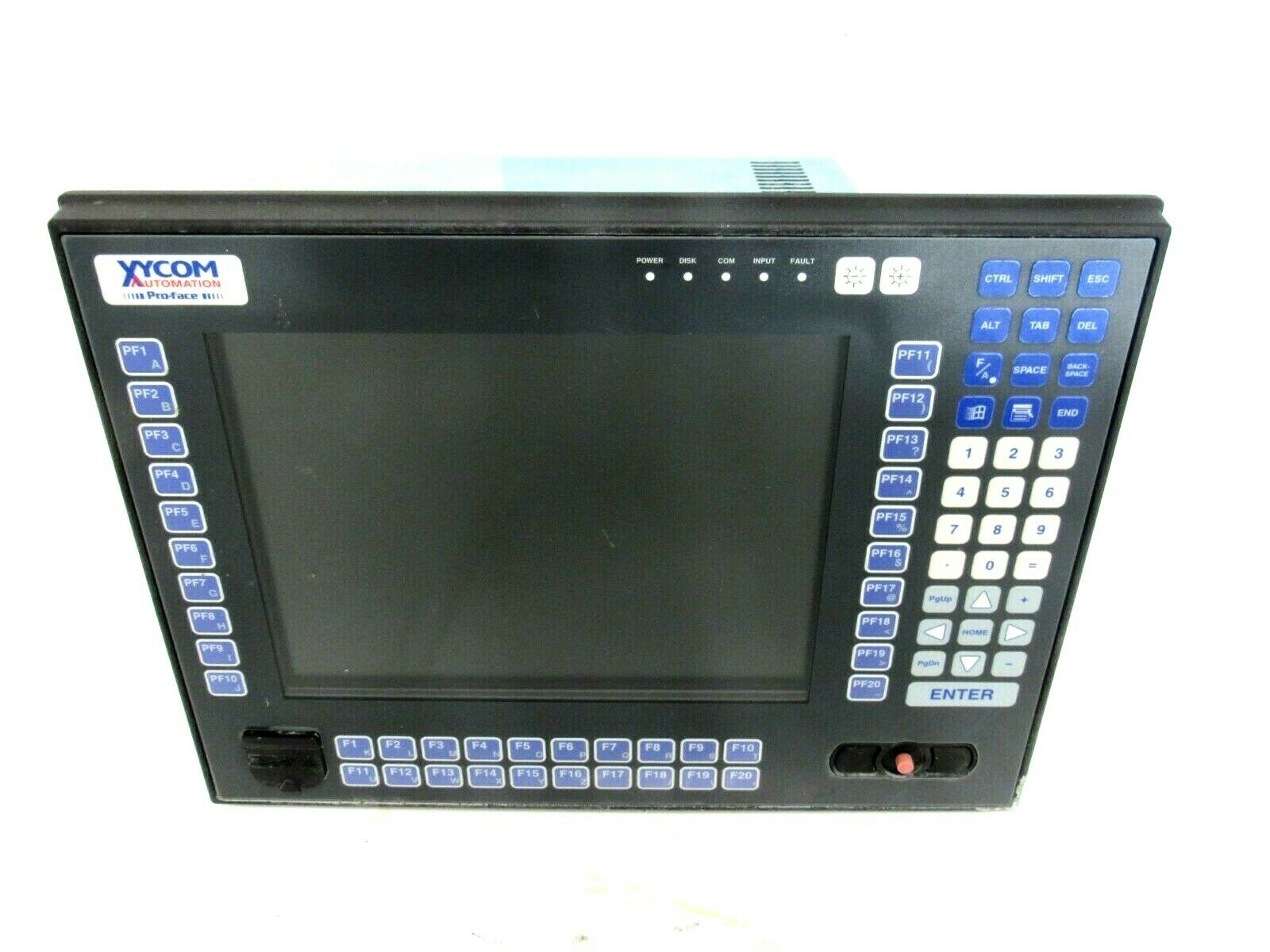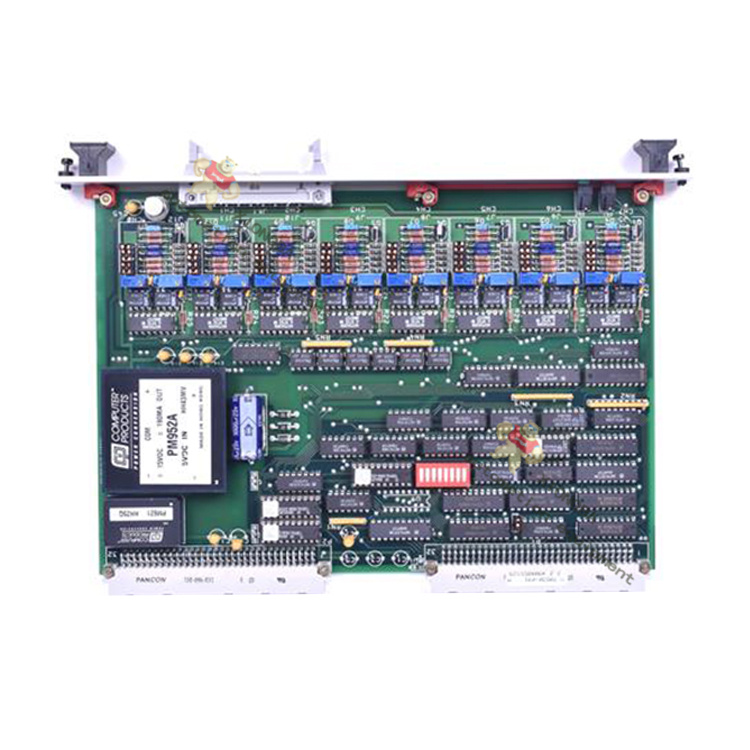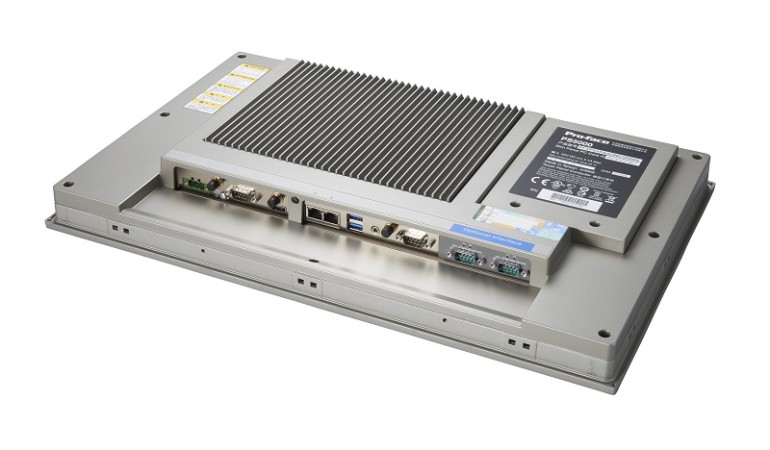XYCOM XVME-956 Optical Disc Module XVME956
ODUCT OVERVIEW
The XVME-956 PC/AT family of products is designed to provide I/O expansion for Xycom’s XVME VMEbus PC/AT products.
The XVME-956 consists of two sets of carrier cards and the accompanying daughter modules with either a PC/XT or PC/AT interface.
When the daughter modules are installed onto a carrier, the resulting module occupies a single double-high VMEbus card slot.
The XVME-956 is designed to operate with Xycom’s VMEbus PC/AT processor modules.
The XVME-956 provides the following features:
• PC/AT expansion I/O in a single VMEbus card slot
• Open architecture daughter modules available from Xycom and other vendors
• Pin and socket connector scheme (no card edge connectors)
• Convenient I/O front panel connections
The XVME-956 consists of carrier cards which drive the PC/AT signals from the host XVME PC/AT,and expansion modules which provide the various PC/AT I/O functions, such as Ethernet, Solid State
Disk, Serial I/O, and SCSI. The carrier cards (XVME-956/1 and XVME-956/12) are made to be compatible with Xycom’s line of VMEbus PC/AT products. The XVME-956/12 is for use with the Xycom XVME-PC/AT modules with PC/104 Expansion sites.
Both the XVME-956/1 and 956/12 provide two expansion module sites and sit adjacent to the VMEbus PC/AT.
The XVME-956/3 expansion kit provides the necessary standoffs and mating connectors for single module expansion on an XVME-PC/AT with an on-board PC/104 expansion site.
Two types of expansion modules are offered.
Type B modules have industry standard PC/104 mechanical dimensions of 3.550″ x 3.775″. Each Type B module requires a separate Xycom front panel kit . Type A modules are 4.010″ x 5.091″ and are functionally the same as Type B modules but have an integral front panel.
Type A modules do not require a front panel kit.
ARRIER CARD INSTALLATION
The carrier card requires the user to jumper the carrier card and attach it to the XVME PC/AT after
mounting the expansion modules. Section 1.2.1 contains information on the carrier card jumper
configuration for /1 and /12.
WARNING
All Xycom VME PC/AT CPU modules with functional revision levels of 4.1 or higher (functional revision levels and part numbers are located on a label on the P1 connector) feature a 16-bit compatible PC/104 expansion site.
This PC/104 expansion site requires a new version of the XVME-956 Modular I/O Carrier Module. If the CPU module’s functional revision level is 4.1 or higher, use the XVME-956/12 (part number 70956-012). If the functional revision level is less than 4.1, use the XVME-956/2 (part number
70956-002). Do not use the XVME-956/2 on a CPU module with functional revision levels of 4.1 or higher as this may cause damage to both modules.
VME-956/1/12 Carrier Card Jumpering
Both the 956/1 and 956/12 need to be jumpered. All AT signals except the data lines are buffered.
Signals which are outputs from the CPU are buffered and driven directly to the input pins of the I/O expansion module sites; such as the address bus, and the control signals. Signals which are outputs
from the I/O expansion module sites, are buffered and are connected to the CPU through jumpers; such as the IRQ signals, and the DRQ signals ttaching the XVME-956/1 to the XVME-PC/AT
The installation procedure involves three basic steps:
• installing the expansion module onto the XVME-956 (see Section 1.3)
• connecting the XVME-956 VME carrier card to the XVME-684, -686, and -687 modules via P1 and P2 of the VME backplane, and installing the XVME-956 and CPU into the VMEbus rack
• installing the printed circuit board (Inter-board connector) on the VMEbus backplane at J2, connecting the XVME-684 or XVME-686 and the XVME-956/1
1.2.2.1 Connect ing the XVME-956 Carrier Card to the XVME-PC/AT and Installing these
Cards in the VMEbus Rack
Xycom modules are designed to comply with all physical and electrical VMEbus backplane
specifications. The XVME-956/1 VME carrier card is a double-high, single-wide module and requires
one slot next to the XVME-684, -686, or -687 with both P1 and P2 connections.
Once the jumper and switch configurations for the XVME-956 are checked, and the expansion module is installed as indicated in Section 1.4, connect the XVME-956/1 VME carrier card to the XVME-684,-686 or -687 processor CPU module.
Procedure
1. Disconnect all power sources.
2.If the XVME-684, -686, or -687 module is currently installed in the VME backplane, remove
the processor module by gently pulling on it until it slides out of the chassis.
3. Place the XVME-956 board on top of the XVME-684 Xycom I/O module so that the P3 connectors line up.
4. Inser t the P3 pins of the XVME-956 VME card into the P3 socket of the XVME-684, -686, or -687 connecting module and press the two boards together.
The second step is sliding the connected cards into the VME backplane.
5. Make sure one card cage slot to the right of the Xycom XVME-684, -686 or -687 board set is clear and accessible.
6. Center the attached XVME-956 and XVME-684, -686 or -687 boards on the plastic guides in the slots.
7. Push the modules slowly to the rear of the chassis until the P1 and P2 connectors engage.
8. App l y straightforward pressure to the handles on the front of the panels until the connectors are fully engaged and properly seated.
Do not use excessive force to engage the connectors.
Installing the Inter-Board Connector
All versions of the XVME-684, -686, and -687 modules route the PC/XT signals to rows A and C on the VMEbus P2 backplane. Because rows A and C are not bussed on a standard VMEbus P2 backplane, an inter-board connector is installed to pass the PC/XT signals from the first to the adjacent slot.
The XVME-686 does not require this inter-board connector, and there will not be one installed on the XVME-686 system unless the application already uses an XVME-956 or an XVME-951.
With the addition of the XVME-956, this inter-board needs to be removed and replaced with a three-position inter-board connector (XVME-686 and -956 only needs a two-position).
All AT signals from the XVME-684, -686, and -687 are received through rows A and C of the XVME 956 connector P2, and from the inter-board connector P3. A three-position inter-board connctor will be used to connect the XVME PC/AT to the XVME-956 module. If the XVME-686 module is being used, ensure that rows A and C on P2, in the third slot, are not being used by another VMEbus card or contact the factory to exchange the three position inter-board connector for a two position inter-board connector. (The three position inter-board connector is included with the XVME-956 module).











